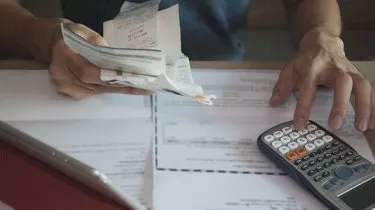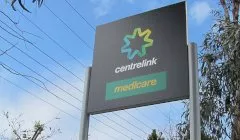Save
What is a debt repayment plan?
According to Nestegg statistics, "The average debt of an Australians has grown to 8.1 times the average debt levels." most of them are in debt in order to cope with daily financial needs, but when an individual incurs too much debt and creditors start collecting, it can be difficult to pay off their financial obligations. A debt repayment plan can help debtors deal with this financial stress without stretching themselves too thin.
What is a debt repayment plan?
According to Nestegg statistics, "The average debt of an Australians has grown to 8.1 times the average debt levels." most of them are in debt in order to cope with daily financial needs, but when an individual incurs too much debt and creditors start collecting, it can be difficult to pay off their financial obligations. A debt repayment plan can help debtors deal with this financial stress without stretching themselves too thin.

A debt repayment plan is an umbrella term that refers to strategies aimed at clearing debt quickly by creating manageable debt payoff calendar or a variety of methods to address debt. It may be created and managed by the principal debtor or with the help of a professional from debt management companies.
Do-it-yourself debt repayment plan
A do-it-yourself (DIY) plan is personally controlled by the debtor with or without prior financial advice.
One way to get started on making a DIY debt repayment plan is to list all debts and arrange them according to repayment priority.
For instance, the debt with the highest interest can be top priority because interest causes the amount to blow up faster. It can also be arranged according to the amount owing so that debtors can eliminate the number of debts they make repayments for sooner.

Debtors can also make use of various tools to ensure that they meet their obligation to make appropriate payments to their creditors.
One of the ways they can keep track of their debt is by using online tools or mobile applications aimed at budgeting and debt reduction. These can help debtors calculate how much their repayments should be to get rid of financial liabilities sooner.
The following may also be done in more drastic cases:
- Refinancing
- Negotiating with creditors
- Applying for a hardship variation
Refinancing
Refinancing refers to the consolidation of all loans and debts into one credit provider so that debtors deal with only one set of principal amount, interest rate and fees.
It may seem like a good option for debtors who have several high-interest debts, but if they are unable to make timely repayments, it may simply be a short-term solution. It’s best to seek advice from a financial counsellor or legal adviser before deciding whether refinancing is a suitable solution for their circumstance.
Negotiating with creditors
Debtors may contact their creditor to negotiate a way that they could make repayments. For example, they can request for their debt to stop accruing interest as long as they can pay the full amount within three to four months.
Applying for a hardship variation
If finances are really tight, debtors may consider applying for a hardship variation.
A hardship variation is when the credit provider agrees to change the terms of the loan or credit to make repayments more manageable for the debtor. For instance, the creditor could waive interest charges if the debtor agrees to make a lump sum payment on the principal amount. They can also reduce monthly repayments to make it more manageable.
Most creditors offer a hardship variation if the debtor experiences severe financial hardship because their main concern is to get their money back; however, they can still reject a hardship variation request.
A hardship variation may also be requested from utilities providers and, for those who are behind on their taxes, the Australian Taxation Office (ATO).
Independent dispute resolution
If the hardship variation application is rejected without any explanations or the debtor is not satisfied with the terms a creditor presents, they may seek the assistance from their credit provider’s independent dispute resolution scheme, which is either the Financial Ombudsman Service (FOS) or the Credit and Investments Ombudsman (CIO).
They may also seek help from ASIC, professionals from the National Debt Helpline or legal advisers from community legal centres.
Professional debt management
An individual may also employ the services of a professional who can negotiate with their creditors or debt collectors on their behalf.
Some of the options are:
- Pay for professional services
- Debt solution or credit repair companies
- National Debt Helpline
Pay for professional services
Debtors may consider paying for professional assistance, however they need to compare debt management companies first before engaging their services.
Once the debtor engages the company’s services, a professional would negotiate a manageable debt repayment plan with the creditor on the debtor’s behalf. If the creditor accepts the debt management agreement, the debt will be paid and the manager would move on to the next creditor to negotiate another repayment plan.
Debt solution or credit repair companies
There are also companies that offer debt solution or credit repair services; however, some may charge high fees for results that they can’t assure.
For instance some companies charge up to $1,000 for credit repair services, but individuals can actually get the job done simply by contacting the creditor or credit reporting agency to correct mistakes.
National Debt Helpline
Those who can’t afford to pay for professional services may contact the National Debt Helpline for free debt management advice from financial counsellors.
This information has been sourced from the Australian Taxation Office and the National Debt Helpline.
About the author

About the author


Debt Consolidation
Mastering debt consolidation: Essential tips for success
Debt consolidation is a strategic approach to managing multiple debts by combining them into a single, more manageable loan. Read more

Debt Consolidation
Credit cards or personal loans: What’s best for debt consolidation?
When it comes to debt consolidation, Australians have several options at their disposal. Among the most common are credit cards and personal loans. Read more

Debt Consolidation
Court approves robodebt class action settlement
The settlement of the robodebt class action has been approved by the Federal Court of Australia, meaning a further $112 million in compensation will be paid to approximately 380,000 Aussies. Read more

Debt Consolidation
Heard of robodebt – a controversial government scheme or buzzword?
What exactly is robodebt? We’ve heard all the buzz, now it’s time to know what this controversial government scheme actually is. Read more

Debt Consolidation
Robodebt class action settles for $1.2bn
The federal government has agreed to a “landmark” class action settlement worth $1.2 billion over its controversial robodebt recovery program, which raised automated debts against welfare ...Read more

Debt Consolidation
Centrelink to resume debt recovery program
Centrelink’s debt recovery program is set to resume from Monday, 2 November, but money owed will not need to be repaid until next year, Services Australia has said. Read more

Debt Consolidation
When should you use debt?
Despite record-low interest rates and changes to credit regulation making it easier for consumers to get a loan, a wealth educator has urged Australians to keep their debt low in order to build wealthRead more

Debt Consolidation
Fresh robodebt allegations delay Centrelink class action
New allegations have been added in the class action against the Commonwealth government over the robodebt scheme that saw Services Australia illegally issue debt collection notices to more than ...Read more

Debt Consolidation
Mastering debt consolidation: Essential tips for success
Debt consolidation is a strategic approach to managing multiple debts by combining them into a single, more manageable loan. Read more

Debt Consolidation
Credit cards or personal loans: What’s best for debt consolidation?
When it comes to debt consolidation, Australians have several options at their disposal. Among the most common are credit cards and personal loans. Read more

Debt Consolidation
Court approves robodebt class action settlement
The settlement of the robodebt class action has been approved by the Federal Court of Australia, meaning a further $112 million in compensation will be paid to approximately 380,000 Aussies. Read more

Debt Consolidation
Heard of robodebt – a controversial government scheme or buzzword?
What exactly is robodebt? We’ve heard all the buzz, now it’s time to know what this controversial government scheme actually is. Read more

Debt Consolidation
Robodebt class action settles for $1.2bn
The federal government has agreed to a “landmark” class action settlement worth $1.2 billion over its controversial robodebt recovery program, which raised automated debts against welfare ...Read more

Debt Consolidation
Centrelink to resume debt recovery program
Centrelink’s debt recovery program is set to resume from Monday, 2 November, but money owed will not need to be repaid until next year, Services Australia has said. Read more

Debt Consolidation
When should you use debt?
Despite record-low interest rates and changes to credit regulation making it easier for consumers to get a loan, a wealth educator has urged Australians to keep their debt low in order to build wealthRead more

Debt Consolidation
Fresh robodebt allegations delay Centrelink class action
New allegations have been added in the class action against the Commonwealth government over the robodebt scheme that saw Services Australia illegally issue debt collection notices to more than ...Read more











